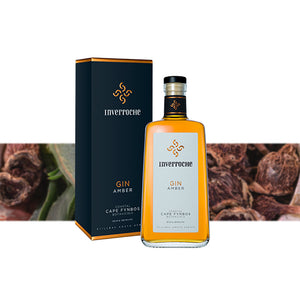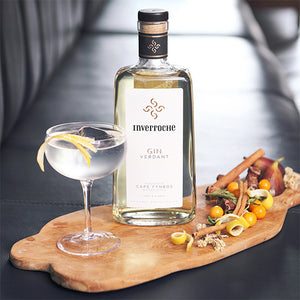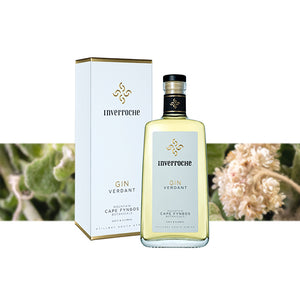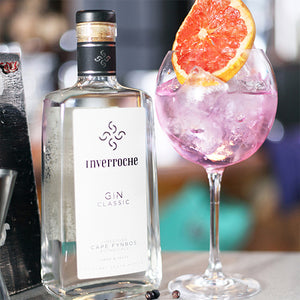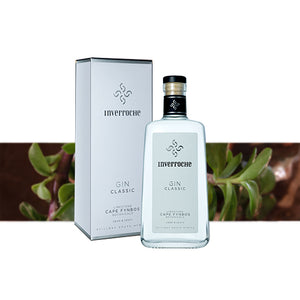Fynbos - the "fine bush".
Visitors who come to South Africa mainly in the summer months of December to April will remember the fynbos as dry, dusty scrub. But with the onset of rain, which falls from June to October, the vegetation literally explodes overnight. The flora is then in full bloom, thousands and thousands of flowers in all shades of colour cover the Western Cape during this time.What is Fynbos?
South Africa, or more precisely the Western Cape, is one of only six "Floral Kingdoms" in the world. The Cape Floral Kingdom is the smallest but most species-rich botanical kingdom on earth, and was declared a UNESCO World Heritage Site in 2004. Some of its inhabitants are believed to be among the oldest plant genera in the world. Fynbos, these are herbaceous plants, many species of which are endemic to the Cape region of South Africa, meaning they are found nowhere else in the world. They owe their name to Dutch, where "fijnbosch" means something like fine-branched bush. And fine-branched they are, too.
From herbs to grasses to the showy silver tree (Protea), with its palm-sized flowers that are pollinated by birds, the fynbos has a unique diversity of species. They all have a remarkable endurance. Thanks to their hard, leathery leaves, they can survive months with little rainfall and survive on the nutrient-poor soils of the mountains and coast.
Where does fynbos occur?
On only 91 000 square kilometres, half a percent of Africa's area, grow more than 9 500 different plant species, one fifth of Africa's plant species - on Table Mountain in Cape Town alone there are more different plants than in the whole of New Zealand or Canada.
Fynbos stretches from the valleys, coasts and mountains of the Western Cape to the area north of the Cederberg Mountains, across the Cape Peninsula and along the coast to Port Elizabeth. A distinction is made between coastal fynbos and mountain fynbos.
The rainfall in the east of the Cape, where Stilbaai, the birthplace of INVERROCHE GINS, is also located, is distributed more throughout the year, while in the west it rains mainly in the winter months. As a result, the plants that occur within the fynbos already differ according to region. About 70% of the Fynbos plants are endemic.Which plants belong to the Fynbos?
Some species of the Fynbos have now also made it into the European garden as ornamental plants. Leadwort, ornamental line and some common geranium species (Pelargonium) originally came from the fynbos vegetation.
Among the best known fynbos species are also the proteas, such as Leucospermum and the King Protea (Protea cynaroides), the national flower of South Africa. The shrubs grow up to four metres high. Their pink flowers reach a size of up to 30cm.
Heaths (Erica), occur in several hundred species in the region, as well as grasses and a variety of flowering plants.
Also found in the fynbos are a large number of daisies and bulbous flowers such as fresias, gladioli, lilies and irises, which can store water in their underground bulb or bulb.
Is the fynbos under protection?
The fynbos is naturally destroyed by bushfires every 20 to 25 years. These are necessary to activate the seeds of the fynbos to ensure its survival.
However, a threat to the fynbos are introduced plant species that displace the herbaceous plants. The expansion of settlements and agriculture are also increasingly restricting the area where the fynbos naturally occurs. Already over 1000 fynbos species are considered extinct or threatened with extinction.
Private initiatives and governmental support programs have been launched in recent years to secure the existence of this unique ecosystem.
One might think that exploitation of the plants should therefore be avoided. But the opposite is true. Through sustainable management of the fynbos, such as the collection of fynbos botanicals for Inverroche Gin, both regions and plants benefit.
Residents of the area are able to generate an income from the naturally occurring plants, and therefore develop an interest in their preservation and do not have to switch to alternative sources of income, such as farming. In addition, when collecting botanicals for Inverroche, explicit care is taken to remove invasive plants in order to preserve the plants' habitat. The gentle collection of botanicals by hand is minimally invasive to the habitat and the plant itself. Heavy equipment or monoculture farming is not used at Inverroche.
Invasive plants that have been removed from the fynbos may well go into the still at Inverroche for firing.
Like the plants, the flavours of the fynbos are unique. Some are distantly reminiscent of familiar European herbs such as chamomile. But it is the sunny, floral notes, as well as an intense herbaceous taste on the palate, that are typical of Fynbos herbs.
Lorna Scott distilled around 150 different fynbos plants until she found the perfect blend for the three INVERROCHE GINS. Some of them are now also known outside South Africa.
Rooibos (Aspalathus linearis) is probably the best known of the fynbos plants, if you go by taste alone. The flowery tea is often drunk instead of black tea, because it is caffeine-free and very digestible. Its bouquet is earthy and flowery, reminiscent of black tea, but not nearly as bitter.
Also on the rise in Europe is the honeybush tea (Honeybush, Cyclopia). This tea also comes from fynbos, which grow exclusively in South Africa. Its taste is less earthy than Rooibos, but much more flowery. The honey, which it carries in its name, can be smelled and tasted in every sip.
The yellow ice plant (Carpobrotus edulis) is also called dune fig in South Africa because of its small, fleshy fruits. Its jelly-like sweet and sour pulp is made into jam in South Africa. Dried, it is used in INVERROCHE AMBER in the post-maceration, giving it its earthy woody character, strongly reminiscent of barrel aging.
Kapokbos (eriocephalus africanus), also called wild rosemary, is reminiscent of Italian rosemary in taste. Its subtle spicy note has now established it as a culinary herb outside South Africa.
The Natal Plum (Carissa macrocarpa) is native to the Fynbos, but not endemic. Its vibrant pink to red fruits taste juicy and sweet, with a tart note reminiscent of cranberries.
It is this composition of diverse flavours that makes INVERROCHE so special as the first craft gin made from fynbos botanicals. No other place in the world could have produced a comparable gin. Because INVERROCHE GIN is as unique as the nature of South Africa itself.
>> You want to order INVERROCHE GIN?
>> You want to order the INVERROCHE GIN gift set?



